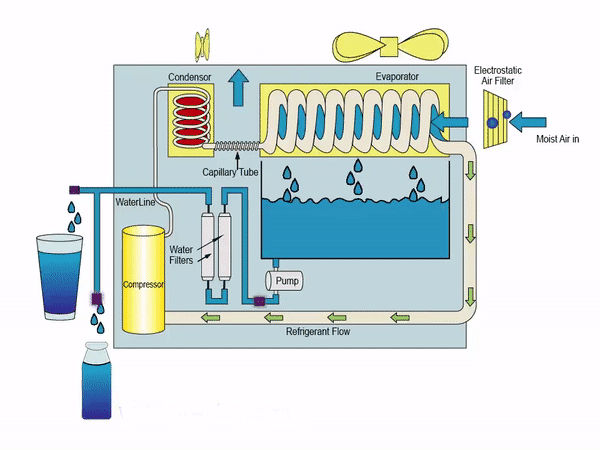This Water System Is The Solar Power Of Water And Another Example Of What Inventors Called Zero-Point Energy.
In the realm of inventive minds, two luminaries stand out, reshaping the way we interact with our environment and harness energy. Willis Haviland Carrier, a renowned American engineer, made his mark in history with his groundbreaking invention of modern air conditioning in 1902. However, his contributions extend beyond climate control, as he ventured into creating an atmospheric water generator. This ingenious device had the power to extract humidity from the air and transform it into fresh water, marking a remarkable example of what inventors referred to as zero-point energy.
What makes Carrier’s journey even more fascinating is his initial objective. It was not his intent to revolutionize home cooling but to address a specific humidity issue faced by a printing company, the Buffalo publishing company known as Sackett-Wilhelms. They sought Carrier’s expertise to cool their rooms, not homes, and this unique problem-solving led to the birth of air conditioning in 1902.
A second notable figure from the early 20th century is Fredrick McKinley Jones, one of the most famous inventors of his time. As a co-founder of Thermo King, Jones played a pivotal role in advancing HVAC technology with his invention of a portable air conditioning unit in 1938. This self-contained, automatic air conditioning unit sparked a revolution in the HVAC and food industries.
Jones’s innovation enabled grocery chains and food production companies to import and export perishable products that were previously limited to canned items. The portable A/C unit effectively gave rise to a new industry – the frozen food industry.
Today, we see a connection between the past and the future. Modern air conditioning and water systems are tapping into the potential of old technology to propel us into a future where clean freshwater is a lifestyle essential.
In essence, the history of air conditioning owes its success to the brilliant minds of Willis Haviland Carrier and Fredrick McKinley Jones. Carrier’s innovative approach, initially focused on solving a printing company’s humidity issue, paved the way for cooling homes and redefining human comfort. His atmospheric water generator stands as a testament to his forward-thinking approach in harnessing renewable resources.
Meanwhile, Jones’s groundbreaking portable air conditioning unit reshaped the HVAC and food industries, facilitating the widespread distribution of perishable products and giving birth to the frozen food industry. These inventors played pivotal roles in transforming how we live and interact with our environment.
As we look to the future, the idea of converting your home and commercial air conditioning systems into atmospheric water generators emerges as a visionary concept, providing clean and sustainable water sources for generations to come. The legacies of Carrier and Jones continue to influence our lives, showcasing the power of innovation and forward-thinking in shaping our world.”
Convent your Home and Commercial AC to an atmospheric water generator for fresh clean water.
What’s the difference between an AWG Atmospheric Water Generator and your Home or Commercial Air Conditioner unit?
Answer: Nothing both are refrigerant bases, both have the same parts and make water the same way, but an atmospheric water generator is portable.
Home and Commercial AC makes more water and the customer can control the amount of water with water tanks and water filters companies they trust.
Our water system is the solar power of water and another example of what inventors called zero-point energy.
